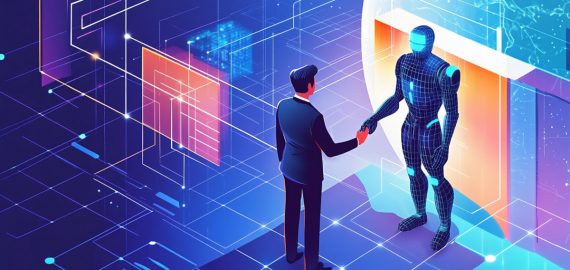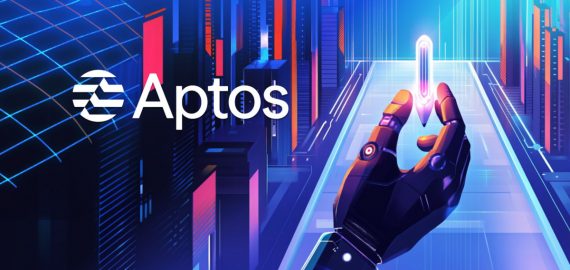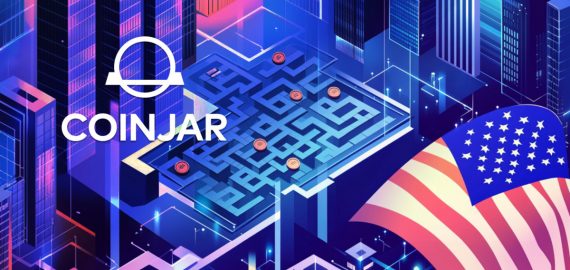Swapping Tokens Across Chains Is Finally Easy – Thanks to Rango Exchange


In Brief
Rango Exchange’s CMO, Martin M.A.P, discusses the company’s advanced cross-chain infrastructure project, which aims to make multi-chain DeFi fast, seamless, and user-friendly.

Swapping assets across blockchains could be as simple as a single click, even for non-crypto natives. In this interview, we speak with Martin M.A.P, CMO at Rango Exchange, about the technical vision behind one of the most advanced cross-chain infrastructure projects in the space. Martin shares how Rango is building the rails to make multi-chain DeFi fast, seamless, and user-friendly.
Can you share your journey to Web3?
Before Rango Exchange, our team had experience with hedge funds and building quantitative algorithms. We entered the crypto space around 2017 or 2018, initially running market-making bots and working on decentralized exchanges. This led us deeper into the mechanics of crypto and what we could contribute to the ecosystem.
In 2021, we saw the rapid rise of DeFi and protocols like 1inch that were aggregating swaps on Ethereum and other chains. We also noticed bridges were becoming more common, though at that time, they mostly supported bridging the same asset—such as BTC to WBTC, or USDT transfers across chains. Users wanted to go further: to swap and bridge across different chains in a single transaction.
So we built a solution that allowed users to, for example, convert ETH to USDT on Cosmos or participate in DeFi on Solana or Avalanche with a single, seamless action. Many existing interfaces were fragmented or incompatible with certain wallets. That inspired us to create a unified interface that could connect multiple wallets and perform swaps and bridges in parallel, even while those bridge operations took significant time.
We continued to expand—adding more chains, more bridges, more DEX aggregators—all aimed at helping users find the best route across networks.
How does Rango determine the best route for a swap across multiple chains and bridges?
At Rango, we treat each on-chain protocol as a node in a graph—whether it’s a DEX, a bridge, or a routing solution. Our smart routing algorithm analyzes the entire graph, where each edge represents not only cost (gas fees) but also time and expected output. Depending on the user’s priorities—whether it’s best price, fastest speed, or lowest slippage—we compute optimal routes across chains.
It’s not just about finding the cheapest route. Some users prefer speed, especially if the most efficient route is slow. So we provide multiple route classifications for users to choose what best fits their needs.
What are the biggest technical challenges Rango has overcome to support so many chains and wallets?
One major challenge was that we initially weren’t familiar with every blockchain we wanted to support. While we knew BTC, EVM, and Cosmos chains, others like Sui, TON, or Solana required us to adapt both our backend and execution systems.
Another big challenge was adapting to new wallet types, especially with the rise of account abstraction. Some bridges didn’t support these newer wallets, which introduced risks of funds getting stuck. Our top priority has always been security, so we implemented checks and configurations to ensure users’ funds remain safe.
Security is also different across blockchains. Ethereum smart contracts have different vulnerabilities than, say, Solana programs or Cosmos modules. Understanding and addressing the specific risks of each chain has been a significant, yet necessary, effort.
How is Rango planning to handle scalability as more chains and protocols get added?
Scalability has been a core focus for us. Unlike many DEXs that rely on SDKs or external APIs, we maintain much of the required state internally. We sync DeFi data—liquidity, pricing, and routes—into Rango’s own backend so we can respond almost instantly without relying on real-time external service calls.
This requires running our own nodes for some chains, especially high-demand ones. The challenge is that each chain and protocol is written in different languages—Go for Cosmos, Rust for Solana, and Solidity for Ethereum. We have to normalize this data into a unified format so our routing engine can make consistent, accurate decisions.
What are some key metrics or milestones Rango is proud of so far?
One major milestone was reaching $1 billion in total volume within a year of launch. Another is the number of major wallets that use our API—Trust Wallet, Binance Web3 Wallet, Exodus, Edge Wallet, and others. It’s a strong signal of trust from the ecosystem.
We also closely track the competitiveness of our rates and the speed of our API responses. If users get a quote in 2 seconds instead of 15, that’s a significant UX win—even if the transaction itself takes longer. We constantly benchmark ourselves to stay at the forefront.
How is Rango positioning itself to attract more mainstream or non-crypto native users?
We’re focusing heavily on improving accessibility. One major hurdle for new users is the concept of gas. You might receive a salary in USDT or USDC, but you can’t move it without ETH or SOL to pay fees. We’re designing routes and front-end flows specifically for those pain points.
We’re also working on a new UI where users can create an account-abstraction wallet using just an email address—no need for browser extensions or external wallet apps. This will go live later this quarter and is designed to lower the barrier for non-crypto natives to start using Rango.
As AI integrates more with blockchain, do you see use cases where AI could enhance cross-chain infrastructure or Rango directly?
We’re already working with protocols and building agent-based systems that allow users to interact with blockchains using natural language. For example, users might type “I want to buy BTC” into a chatbot. The agent checks their wallet, asks which token to use, and fetches the route via Rango’s API.
These AI interfaces are just starting to reshape how people access DeFi.
How might Rango evolve to support RWAs as they become more prominent in DeFi?
Most RWAs today exist on a single chain, and some are even issued as NFTs. As tokenized funds, ETFs, or assets become more common, Rango can help bridge users from other chains to those ecosystems.
For instance, if someone wants to buy a tokenized ETF issued on one chain, Rango can let them do so using BTC or assets from another chain, removing the need for manual bridging or multi-step processes.
With traditional finance exploring blockchain tech, how do you see Rango fitting into the intersection of TradFi and DeFi?
To onboard a billion users, we need to bridge fiat and crypto. We’re actively working with on-ramp/off-ramp providers to enable direct fiat-to-smart-contract transactions. It’s not live yet, but we expect progress by 2025.
Can you share Rango’s roadmap moving forward?
Currently, Rango supports over 70 blockchains and has recently gone live on Sui. Our main goals are to scale securely and improve backend infrastructure for broader user adoption.
We’ve also launched Pluton Finance, Rango’s version 2. While Rango focuses on asset swaps and cross-chain transfers, Pluton explores new user-centric use cases. Our roadmap is about extending Rango’s core infrastructure to power even more intuitive, fast, and flexible blockchain interactions for users everywhere.
Disclaimer
In line with the Trust Project guidelines, please note that the information provided on this page is not intended to be and should not be interpreted as legal, tax, investment, financial, or any other form of advice. It is important to only invest what you can afford to lose and to seek independent financial advice if you have any doubts. For further information, we suggest referring to the terms and conditions as well as the help and support pages provided by the issuer or advertiser. MetaversePost is committed to accurate, unbiased reporting, but market conditions are subject to change without notice.
About The Author
Victoria is a writer on a variety of technology topics including Web3.0, AI and cryptocurrencies. Her extensive experience allows her to write insightful articles for the wider audience.
More articles

Victoria is a writer on a variety of technology topics including Web3.0, AI and cryptocurrencies. Her extensive experience allows her to write insightful articles for the wider audience.

















































